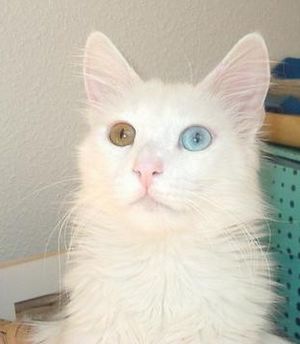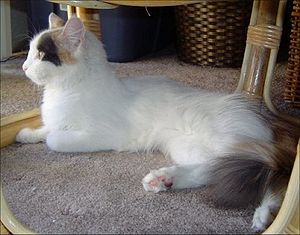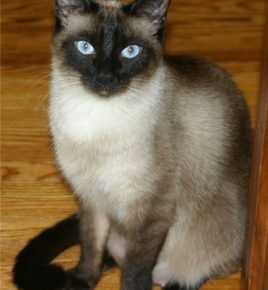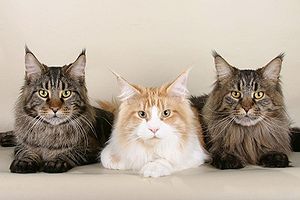 |
| Vital Statistics: |
| Place of Origin: Turkey |
| Coat Type: medium long, soft, silky, no undercoat |
| Color: white, black, blue, black smoke, blue smoke, tabby patterns |
| Temperament: affectionate, curious, intelligent, like water & bathing |
Where does the Turkish Angora come from?
The first long-haired cats to appear in Europe were from Angora, now Ankara, Turkey. The Angoras mated with other cats and seemed to disappear. In 1955, two cat lovers visiting Turkey spotted the old type Angora which had auburn markings on the face and tail and was otherwise white. The visitors were able to obtain a pair of these cats and brought them back to Britain. The pair of cats produced kittens the same as themselves. Some were exported to the U.S., although at some point, Americans did receive cats directly from Turkey, and a breeding program was begun.
What does the Turkish Angora look like?
The Turkish Angora is a strong, hardy cat with a small to medium size body that is long and graceful. The head is a small to medium wedge shape. Ears are wide at the base, long and pointed. Eyes are large and can be almond shaped or round. Legs are long with hind legs slightly longer than the front ones. Paws are small and round with tufts between the toes. The tail is long and full and carried low or sometimes over the back. Coat is medium long with a neck ruff. Hair is silky and shiny. There is no undercoat. Colors are white, black, blue, black smoke, blue smoke and tabby patterns.
Does the Turkish Angora make a good pet?
The Turkish Angora is an intelligent, curious breed. While they don’t like to be held much, they will stay close to their humans. Turkish Angoras like water and taking baths, similar to their kin, Turkish Vans. They are an affectionate and lively breed. They get along well with other pets including dogs as long as the dog knows who is the boss.
Where can I adopt a Turkish Angora?
The following organizations may help you locate the breed.
www.turkishangora.purebredcatbreedrescue.org
www.turkishangora.rescueme.org
www.petfinder.org/shelters/1by1.html
Possible Health Issues
Deafness, hypertrophic cardiomyopathy, allergies.



